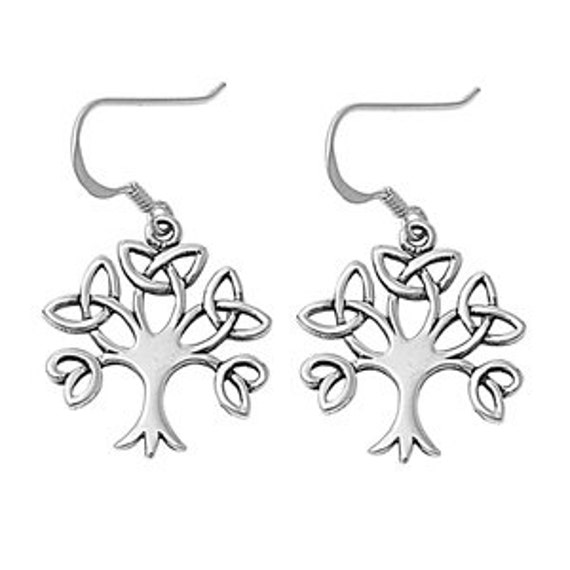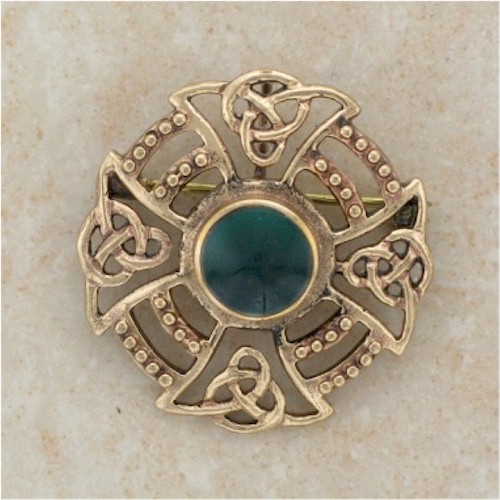Celtic Jewelry Biography
Source(google.com.pk)Celtic Jewelry Show:
The Celts, whose lands spread across Europe from Hungary to Ireland two thousand years ago, left a rich legacy of art. They were skilled metal workers, with a strong interest in gold, silver and bronze ornaments for themselves and for their horse trappings. In Wales, where the language and culture survive with unbroken continuity from those early times, the Celtic design tradition is still part of the living heritage. Our Celtic jewelry is drawn from both modern Welsh and older Celtic sources, with design as timely today as it was two thousand years ago. Our Celtic jewelry, with the exception of a few pieces made in Wales, is made in the USA. Much of our Celtic jewelry collection is exclusive to David Morgan.
Celtic Jewelry
The origins of Celtic Jewelry are thought to date back to between 2000 BC to around 550 AD when silver and gold was used by Celtic craftsmen to create exquisite jewelry adorned with Celtic symbols.
Although time has progressed and the process of making Celtic jewelry has been refined, what remains prominent in the decoration of modern day pieces is the representation and meanings of the ancient Celtic symbols, so whilst the styles may have changed what remains very much evident is the significance, which is why charming and symbolic Irish Celtic Jewelry is so highly sought after and admired throughout the world.
A perfect Irish gift and distinctive in meaning, style and splendour, the range of delightful Celtic Jewelry that is available today
The Celts dominated Mid and Western Europe for a thousand years. But it is only recently that the importance of Celtic influence on the cultural, linguistic and artistic development of Europe. The Celts as an identifiable race or ethnic group have long since disappeared, except in places such as Ireland and the Scottish Highlands. The Celts transmitted their culture orally, never writing down history or facts. This accounts for the extreme lack of knowledge about them prior to their contact with the classical civilizations of Greece and Rome. They were generally well educated, particularly on topics such as religion, philosophy, geography and astronomy. The Romans often employed Celtic tutors for their sons. The bravery of the Celts in battle is legendary. They often spurned body armour, going naked into battle. Celtic society was typically more equal in terms of gender roles. Women were on more or less equal footing as men, being accomplished warriors, merchants and rulers.
Celtic knots or Celtic interlace are ornamental patterns primarily were used to decorate Bible manuscripts, monuments (notably Celtic crosses and cross slabs) and jewelry. They probably were used in other media such as wood carving and textiles but these have not survived. Knotwork tradition in manuscript painting possibly came to Ireland in the middle of the 7th century in manuscripts illuminated by Coptic monks from Egypt or Syria . This is not a settled issue as far as the art historians are concerned but the best evidence of style, coloring and methods of construction I have seen points to Middle Eastern prototypes. From Ireland the style spread to Scotland (in those days Pictland and Dalriada), Wales and Northumbria and with missionaries of the Celtic Church to Europe. Viking raiders later appropriated some of the design concepts into a more chaotic style of animal interlace.
Celtic knots are complete loops with no end or beginning. Celtic animal interlace is similar in construction but the cords terminate in feet, heads, tails ect. The animal designs are very much influenced by older Saxon and Pictish traditions of abstract beast forms that when combined with the new more sophisticated knotwork of the Celtic designers became known as 'Hiberno-Saxon'. A good Celtic artist will never leave a loose end on a strand unless it is stylized into a zoomorphic element or spiral. Pure knots should always be unending. On this point of ornamental grammar you can distinguish much that is made to look like Celtic design by designers who do not really know the tradition. The Coptic examples of knotwork that pre-date the early Irish work are.
The early Celts left behind an enduring legacy of almost hypnotic knots, fierce beasties, and spirals, some of them drawn so finely that people called them "the work of angels". What they did not leave behind was a Rosetta stone, if you will, saying that one particular knot stood for strength and another one meant love, etc.
We know that the Celts believed strongly in the interconnectedness of all life, and that their interlaced patterns reflected this belief. We can glean a bit more information about their symbols and beliefs from the old Celtic myths and legends.
But without better evidence, we are not willing to ascribe certain meanings to the various knots we sell. We're willing to bet, though, that as you wear and enjoy our jewelry, it will take on its own special significance just for you. Click on the following link to visit our
Traditionally, claddaghs are expressions of love and friendship. Like most traditional symbols, the origin of the claddaugh has been obscured by the passage of time. It is almost certainly from the Irish fishing village of Claddaugh, near Galway. Some stories say that "back in the 16th Century a young love torn jeweller from Galway in Ireland named Richard Joyce was kidnapped by pirates. Thinking of the girl he left behind, he designed a ring to express how he felt. It consisted of a heart to express his love, a crown for his loyalty and hands for their friendship. On returning after 5 years he was delighted to learn she had not married, he then presented the ring to her. The Claddagh has been worn as a wedding ring ever since." Others say the design was brought back from the Crusades by a young man captured by the Saracens. Whatever its history, the claddaugh has become an enduring symbol of affection. The heart in the center of the design represents love, the hands that surround it represent friendship, and the crown at the top if present is symbolic of fidelity.
Claddaghs are worn on the left hand, facing inward, if your heart is spoken for. If you are unattached, wear the ring on your right hand, facing outward. Click on the following link to visit ou
Strictly speaking, a "Celtic cross" is not just any cross that has Celtic knotwork on it. Celtic crosses are, in fact, much older than Christianity. They are equal-armed crosses, enclosed or backed by a circle. The cross can symbolize the four quarters of the earth, and/or the four elements arth, air, fire, and water The circle is a symbol of eternity and the path of the sun in the sky. After the introduction of Christianity, it became more common to see the equal-armed cross atop a matching pedestal, which gave it a more elongated form. Click on the following link to visit ou
Pentacles are composed of a five-point star enclosed within a circle. Pentacles can be variously interpreted as representing the five elements earth, air, fire, water, and spirit, or the five stages of Life birth, youth, adulthood, old age, and death. In both cases, the path used to trace the star shape symbolizes the continuity and connection between the extremes. The pentacle is often used as a symbol of faith by Pagans, and particularly by Wiccans. Click on the following link to visit our.
Celtic Jewelry Jewelry Designs Box Armoire Organizer Making Stores Display Holder Tattoos in Candles Photos

Celtic Jewelry Jewelry Designs Box Armoire Organizer Making Stores Display Holder Tattoos in Candles Photos

Celtic Jewelry Jewelry Designs Box Armoire Organizer Making Stores Display Holder Tattoos in Candles Photos

Celtic Jewelry Jewelry Designs Box Armoire Organizer Making Stores Display Holder Tattoos in Candles Photos

Celtic Jewelry Jewelry Designs Box Armoire Organizer Making Stores Display Holder Tattoos in Candles Photos

Celtic Jewelry Jewelry Designs Box Armoire Organizer Making Stores Display Holder Tattoos in Candles Photos

Celtic Jewelry Jewelry Designs Box Armoire Organizer Making Stores Display Holder Tattoos in Candles Photos

Celtic Jewelry Jewelry Designs Box Armoire Organizer Making Stores Display Holder Tattoos in Candles Photos

Celtic Jewelry Jewelry Designs Box Armoire Organizer Making Stores Display Holder Tattoos in Candles Photos

Celtic Jewelry Jewelry Designs Box Armoire Organizer Making Stores Display Holder Tattoos in Candles Photos

Celtic Jewelry Jewelry Designs Box Armoire Organizer Making Stores Display Holder Tattoos in Candles Photos
No comments:
Post a Comment